Are your beautiful beloved plants dying despite your best efforts? Learn how to identify problems and How to Revive a Stunted Houseplant.

If you are worried that your favorite plants indoors are not growing the way they should, then here’s something for you: 12 best tips and tricks on How to Revive a Stunted Houseplant.
Read about Reasons for Brown Tips on Indoor Plants + Solutions
How to Revive a Stunted Houseplant?
1. Keep it in a ‘Plant ICU’
What is that ‘Plant ICU,’ you may ask? Well, consider it a place where you can keep the plant when it is not doing well–A more stable environment where it would be exposed to constant temperature and away from harsh winds and cold drafts. For example, a greenhouse will be a great place, or you can DIY a small indoor greenhouse for this purpose.
Also, ensure that the plant stays protected from harsh sunlight, and there should not be complete darkness either during the process. A place that gets mild sunlight for some hours and indirect light all day would be the best. Overall, during this period, keep your plant away from any stress at all.
2. What About Watering?

One of the primary causes of stunted growth can be dehydration. Check out for underwatering symptoms; if it’s a simple case of not watering a plant for days, your plant will be fine once you saturate it thoroughly.
Even the possibility of regular overwatering can stunt a plant’s growth–so look out for overwatering symptoms as well–like overly moist soil all the time. So, don’t allow any waterlogging in the container, and take the required steps. Also, you can add organic matter to the bottom of the container to enhance drainage.
In case of root rot, immediately repot the plant in fresh quality, well-draining potting mix and follow these steps.
3. Provide Adequate Light
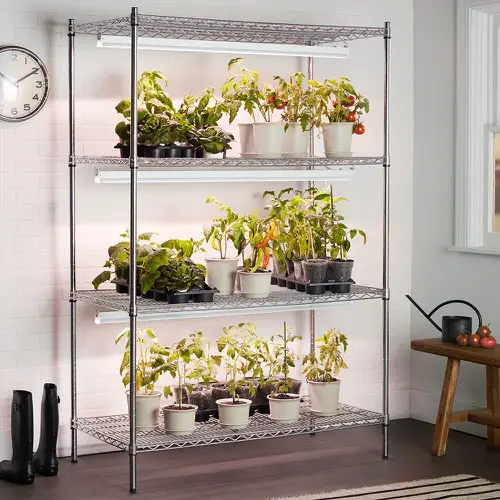
Sunlight tends to vary in intensity from season to season, and during the colder months, the sunlight is less intense when the days get shorter. With the spring and summer seasons, the intensity and duration increase.
Lack of enough sunlight in the colder months or excess sunlight can cause stunted growth in plants.
Check each houseplant’s specific needs to provide accordingly. If there is a short supply of sunlight, it is best to place them under grow lights. In excess sunlight, move the plant to a more shaded spot.
4. Inactive Growing Season, Wait for it to Change
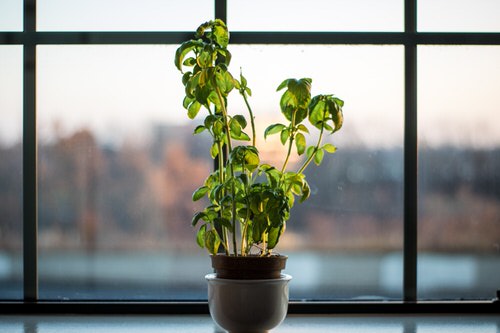
Houseplants can enter into a dormant stage or not show much growth in the colder months or in summer (if you live in a very hot climate), and this can look like a case of stunted growth.
However, it can only be an inactive growing season for the plants, so wait for it to change. Avoid fertilizing and watering your houseplants regularly during the dormant phase, as they do not need it.
How to Revive a Stunted Houseplant – Additional Tips
5. Treat Nutrient Deficiencies
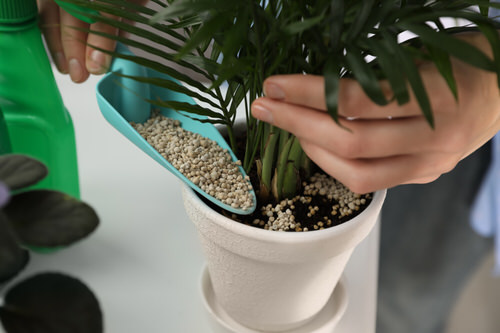
Plants require a sufficient amount of magnesium, nitrogen, and potassium to perform well. Without an adequate supply of the necessary nutrients, the plants can have difficulty absorbing water and cause stunted growth.
After ruling out other issues, if the plant’s growth is stunted due to a lack of nutrients, it is best to consult an expert to understand the best treatment.
To fix nutrient deficiencies, it is best to feed the plant with a bone meal, a supplement loaded with phosphorous. Check which fertilizer will be most suitable for your specific houseplant and follow the instructions on the label or your expert’s advice.
Have a look at the best homemade fertilizers
6. Maintain the Right Temperature
Houseplants directly react to the kind of temperature they are kept to grow. Warmth usually speeds up growth and germination, while lower temperatures can slow down the life processes.
It is best to keep each houseplant’s temperature requirement in mind to avoid stunted growth. You can club the plants with the exact requirements together, as it also helps in increasing humidity.
7. Solve Rootbound Issues
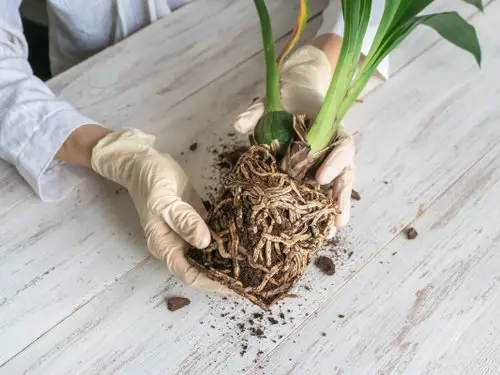
If you have forgotten to transplant your plant into a bigger container, it may become rootbound and cause stunted growth. Once you have determined this to be the main cause, it should be ready to be repotted.
To fix this situation, choose a pot 2-inches wider than the old container. Ensure it is clean and has enough drainage holes at the bottom.
First, immediately trim the roots that grow out through the drainage holes. Gently remove the plant from its container. Water it well and watch it thrive well. Use your fingers or a small knife to gently loosen the soil and shift the plant to a new, bigger container with fresh soil.
Do peace lilies like to be root bound? Find out the answer in this Post
8. Change the Soil

Stunted growth in plants and discoloration of the foliage can be due to poor soil health. It can be because it is too wet, drains out poorly, or is too compacted for the growth of roots. Even excess feeding can harm the soil’s quality adversely.
To fix the soil, you can break up the existing soil to help with aeration and add aerating additives. Also, transfer the soil into a porous container or opt for light, well-aerated potting soil.
How to Aerate Potted Soil?
- Use a stick or chopstick to poke deep into the soil 5-6 times. Don’t worry if a few roots get snapped.
- Water the plant and listen carefully for crackling sounds while the water travels through the soil.
- Repeat 2-3 times every time you water the plants.
Here are the best ways to rejuvenate an old-growing medium
9. Do Some Pruning
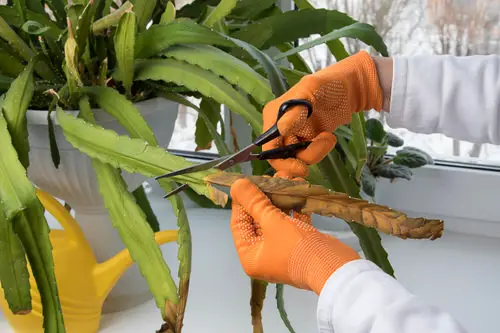
Pruning right is very important for a plant’s overall appearance and growth. To encourage growth, start by making selective cuts to places where the plant looks leggy.
It is essential to begin small and not remove more than 10-20 percent of the plant’s foliage at one time. You should wait 3-4 weeks before you can prune again.
10. Provide the Right Environment for Growth
Every houseplant has specific growing needs, and that is why gardeners should know what exactly to provide them.
Knowing the right amount of sunlight, temperature, humidity, water, and fertilizer for the individual plants works best. It can stop your plants from a condition of stunted growth.
11. Treat Pests or Diseases

One of the most common causes for a stunted plant’s growth can be pests and diseases that usually impact plant chlorophyll production.
To fix such a situation, it is best to isolate the affected houseplant immediately to prevent the spreading of the disease or bugs. Then, identify the pest or disease to understand the treatment process. Talk to an expert and seek help to know the plan to save the plant.
For instance, it is a case of mealybug infestation, and you can use pesticides or diluted rubbing alcohol to treat the plant. It is only right to consult a professional to treat your plants in a heavy infestation.
Learn how to get rid of the most common houseplant pests
12. Protect from Downpour
Overwatering always harms the plant’s growth. Heavy rains can send the plant into a state of shock and stunt its growth.
Move the houseplants to an enclosed spot to secure them from harsh weather conditions like heavy rains. If the houseplants sit in such corners where they can receive rain showers often, it may not be a great idea to keep them there.
13. Keep Houseplants Indoors

The best way to stop houseplants from having a case of stunted growth is to grow them indoors rather than keeping them on balconies and window sill, rather than keeping them outdoors in harsh conditions like too much sunlight or extreme cold.
Keeping plants indoors gives them such growing conditions in an environment that can be controlled better and lead to optimum development.
For a better gardening effect, you can even try making a greenhouse in the yard and gain complete control of the internal conditions. Make sure the plants get all the right growing conditions, such as light, humidity, and temperature.


